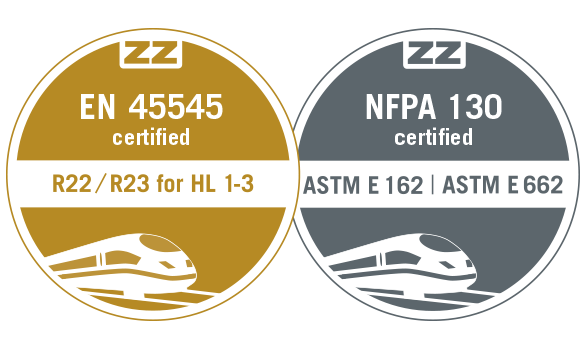
EN 45545 – Basic principles
The standard series EN 45545 “Railway Application – Fire protection on railway vehicles” contains several parts that regulate the fire protection requirements placed on railway vehicles. The EN 45545 standard was introduced with the directive (EU) no. 1302/2014 (TSI LOC&PAS) and, after the transition period, is binding for all new vehicles throughout Europe since 01/01/2018.
The main goal of the standard series EN 45545 is to protect passengers and personnel within railway vehicles in the event of a fire, so that they can leave the railway vehicle quickly and get themselves to safety. The requirements expressly stipulate the protection of life and limb, and not preservation and protection of the vehicle.
The standard series EN 45545 contains the following parts:
Part 1: General
Part 2: Requirements for fire behaviour of materials and components
Part 3: Fire resistance requirements for fire barriers
Part 4: Fire safety requirements for rolling stock design
Part 5: Fire safety requirements for electrical equipment
Part 6: Fire control and management systems
Part 7: Fire safety requirements for flammable liquid and flammable gas installations
EN 45545 expressly defines personal safety as an essential protection target. In the event of a fire, effective rescue and evacuation measures must be possible. To achieve this goal, the potential for the occurrence of fires must be minimised by means of constructional and organisational measures. The materials used in a railway vehicle must reduce the spread of fire and smoke in the event of a fire and minimise the effects on the people in the railway vehicle (e.g. from toxic smoke fumes).
In EN 45545, railway vehicles are classified in different operation categories (OC 1 through OC 4) with respect to their utilisation and the subsequent conditions. Especially relevant in this respect are the options for evacuation of the passengers.
Operation categories
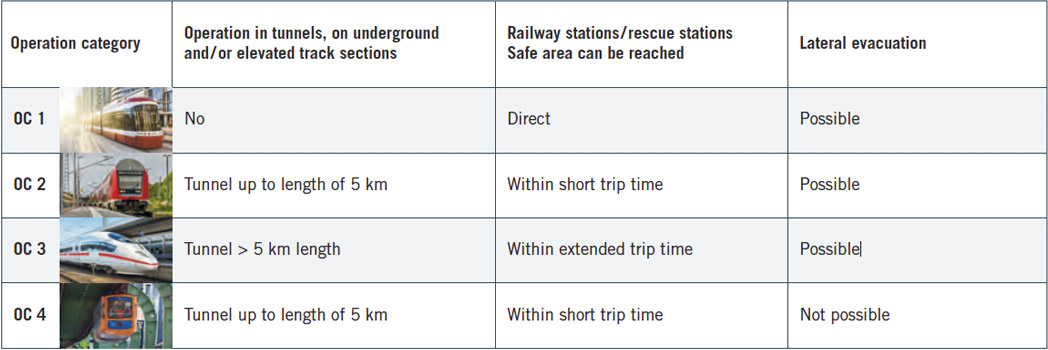
Depending on the operation categories – and the subsequent evacuation options – railway vehicles are classified in different hazard levels (HL) based on their utilisation. These levels are used for determining the additional requirements placed on the materials used within the railway vehicles.
Hazard Level
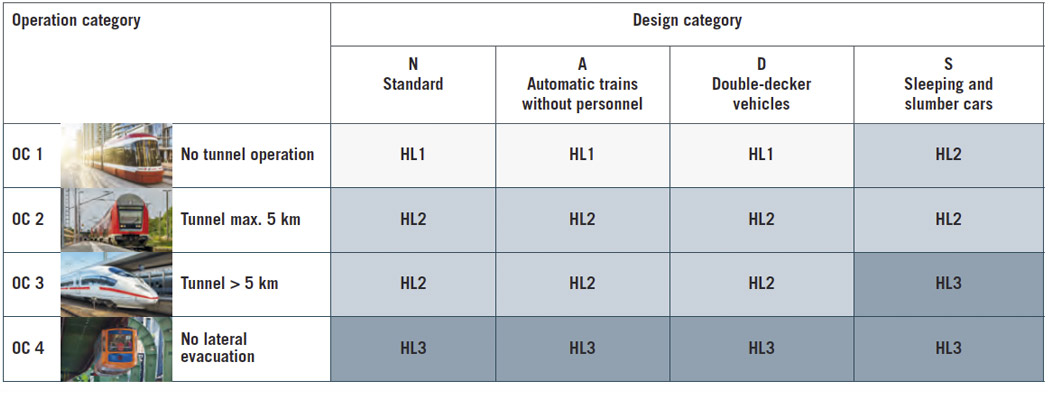
EN 45545 Part 3
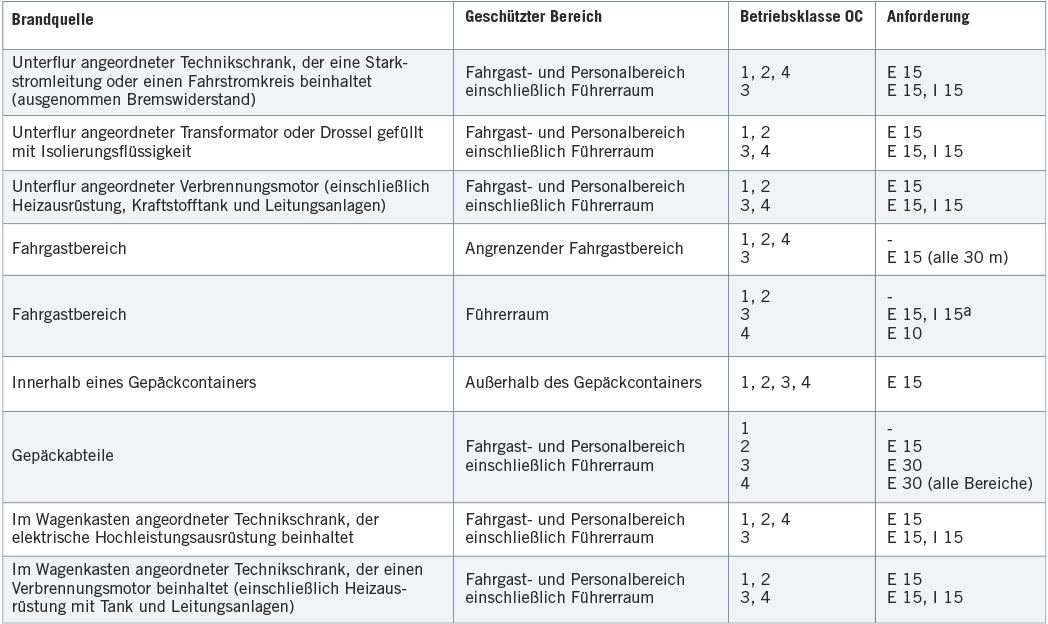
Part 3 of EN 45545 defines the requirements (based on the operation category) and test conditions for fire barriers in railway vehicles. The fire resistance tests must be conducted in accordance with EN 1363-1 in order to ensure compliance with requirements E (integrity) and I (heat insulation).
Preliminary tests of fire barriers
The in-house testing installation of Karl Zimmermann GmbH can be used to conduct fire resistance tests for special fire barriers. This allows us to support you throughout the entire development process and to offer you the right product for your railway vehicle application.
Requirements for fire behaviour of materials and relevant technical fire properties
EN 45545-2 defines the requirements for technical fire properties of all materials and components installed in railway vehicles. Relevant technical fire properties (FIRST):
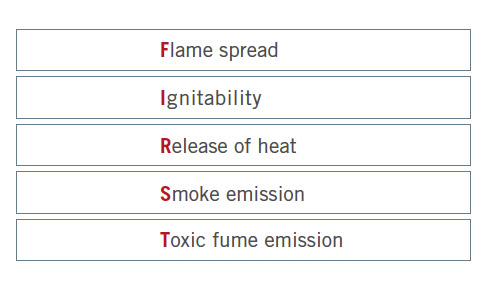
The single test procedures and stipulated threshold values are based on the hazard level and the intended utilisation of the material (see requirement sets).
Requirement sets and validations according to EN 45545-2
EN 45545-2 allocates the construction materials and components used in the railway vehicle an requirement set(R1 bis R26) on the basis of the application. The phrases define the necessary technical fire properties and test procedures that must be validated as proof of the usability of a material.

For non-listed components (such as penetration fire protection systems) the exposed surface is used as a basis for analysis. If it is larger than 0.2 m² compliance with R1 for components within the coach body and R7 for components outside the vehicle body is required. Components with an exposed surface ≤ 0.2 m² must be analysed individually within the classification rules of EN 45545-2. (These components generally require validation of compliance with R22 for use within the vehicle body and R23 for use outside of the vehicle body.)
Validations of requirement sets R22/R23
Karl Zimmermann GmbH has validated compliance of all products used in railway traffic in accordance with the requirements of R22 and R23. The products are used as connecting seals, cable and pipe penetration seals and for lining wall surfaces with an area ≤ 0.2 m².
